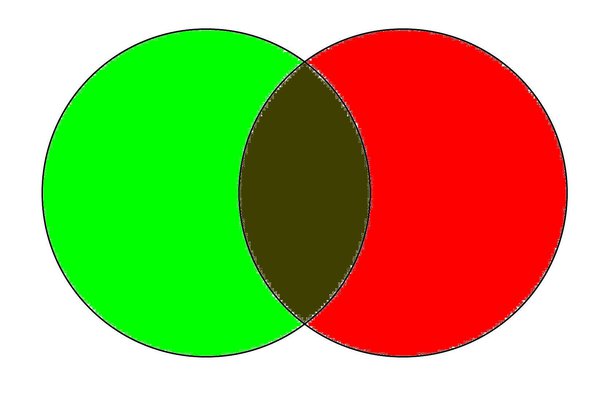Exploring the Chemistry Behind How Red and Green Make the Color We Know and Love: A Comprehensive Guide!

Are you curious about how the colors red and green come together to create the beautiful hue that we all adore? If so, you’re in luck! In this comprehensive guide, we’ll be diving into the fascinating world of color chemistry and exploring how these two distinct primary colors interact with each other. Join us on a journey as we examine the science behind our favorite hues and discover everything there is to know about how red and green make the color that’s captured our hearts. So sit back, relax, grab your lab coat if you have one – it’s time to explore!
What is Red and Green?
Red and green are two of the most basic colors in the world, and they’re responsible for the color we know and love! In this article, we’ll explore the chemistry behind how red and green make the color we know and love.
Red and green light are composed of a combination of energy from different wavelengths. When these two colors hit your eye, they stimulate different receptors in your eyes to create a mental image or feeling. For example, red stimulates the retina which creates feelings of warmth and aggression while green stimulates the retina to create feelings of relaxation and happiness.
So why do we see these colors differently? It has to do with how our eyes work. The rods in our eyes are sensitive to light at the short-wavelength end of the visible spectrum (near violet), while the cones are sensitive to light at all other wavelengths (including blue, yellow, orange, red, white, and infrared). The amount of each wavelength that hits your eye affects which receptor is activated. So when you see a pure red or green light source, only one of those wavelengths will be activating your rods/short-wavelength receptors while all other wavelengths will be activating your cones/long-wavelength receptors. Therefore you will only see either red or green depending on whether your pigment is composed mostly of rod-activating molecules or cone-activating molecules.
The Elements of Red and Green
Red and green are two of the most important colors in the world, and their chemistry is fascinating! In this article, we’ll explore the basics of how these colors are made, and we’ll give you a comprehensive guide to using them in your artwork.
To understand how red and green are created, it’s important to first understand how light works. When light hits something, it creates energy in waves. These waves can be called photons (or particles of light), and they travel through space as long lines called electromagnetic radiation.
One type of radiation that travels through air is visible light. Visible light consists of different colors because each wavelength (or color) has a specific set of energy waves. Violet rays have the shortest wavelength and are the least energetic; they travel through air the quickest. Blue rays have a longer wavelength and are more energetic; they travel through air at a slower rate than violet rays but still reach our eyes sooner than gamma rays or microwaves. Green rays have the longest wavelength and are the most energetic; they travel through air the slowest of all!
So why do we see red and green? When white light (all colors together) hits an object, some parts reflect while other parts absorb. Red objects have more blood vessels than other colors, so they more easily reflect wavelengths of light like red and orange. Green objects have lots of chlorophyll which helps them absorb those same wavelengths, making them look green!
The Chemical Process Behind the Making of Red and Green
The chemical process behind the making of red and green has been a mystery for centuries. But in recent years, scientists have figured out how to create these colors using a simple reaction between two different elements. To make red, you need hydrogen and oxygen, while green requires nitrogen and oxygen. The reactions are as follows:
Red:
Hydrogen + Oxygen = Red Color
Green:
Nitrogen + Oxygen = Green Color
The Color Spectrum
The color spectrum is the range of colors that humans can see. The colors are broken down into three bands: red, orange, and yellow; green, blue, and indigo; and violet, which is the color associated with the highest concentration of light. Each band has its own unique set of chemical properties that give it its own distinct color.
Redshift is how much a particular wavelength of light is shifted towards the red end of the spectrum. The higher the redshift, the more blue the light has been shifted towards. This is why things that are redder appear bluer to our eyes: their light has been stretched out more than things that are yellower.
A melanin molecule is responsible for coloring our hair, skin, and other tissues in different ways. The molecules are shaped like tiny hooks (called phenyl groups) and they attach to other melanin molecules to create complex networks. These networks determine how light interacts with our skin and what colors we see.
For example, when you look at someone who has blond hair, part of their hair contains more melanin than parts of their hair that have darker pigmentation. This makes blond hair seem lighter than darker hair because blond hair reflects more sunlight than dark hair does.
Conclusion
In this comprehensive guide, we will explore the complex chemistry behind how red and green make the color we know and love. By understanding the elements and molecules involved, you will be able to create more vibrant hues in your own work or wardrobe. From primary colors to duochrome effects, this guide has it all! So whether you are a beginner or an experienced chemist, I hope you take advantage of the information contained herein.






